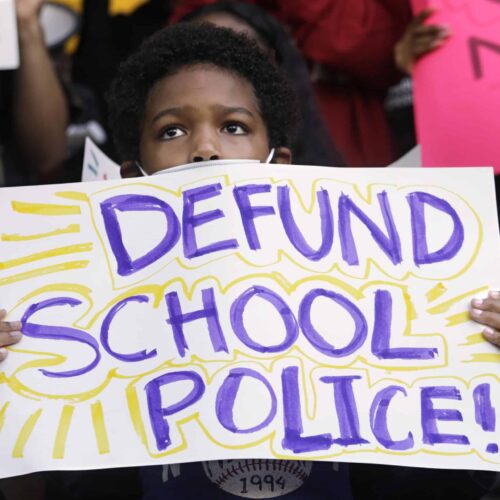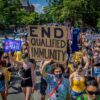Introduction
Five major headlines in the news recently offer significant insight into America’s crisis in police accountability:
1. Black kids arrested for a crime that doesn’t exist
Earlier this fall, the Center for Public Integrity and a coalition of other journalism organizations including USA TODAY Network published “Criminalizing Kids,” a nationwide look at the disproportionate harm that police presence in schools has on Black and disabled kids in particular.
It led the American Civil Liberties Union to renew a push for reform that calls for diverting money from uniformed cops patrolling middle school hallways, to hiring more mental health professionals and trauma-informed staff.
Last week, an investigation by ProPublica and Nashville Public Radio provided a spectacularly horrific example of the harm, racism and puzzling prioritization of law enforcement resources wrapped up in the school policing conversation. They told the story of police in Tennessee arresting a group of Black elementary school girls, placing an 8-year-old in handcuffs. Their crime? Failing to intervene when two 5- and 6-year-old boys were involved in a minor playground scuffle that was caught on video.
2. Police killed Black Americans twice as often as we were told
A landmark study by researchers at the University of Washington found that in 55% of cases in which someone died while interacting with police, the cause of death was mislabeled. Homicides at the hands of officers were mislabeled thousands of times over the past four decades.
“The findings reflect both the contentious role of medical examiners and coroners in obscuring the real extent of police violence,” the New York Times reported, “and the lack of centralized national data …”
“Researchers estimated that over the time period they studied, which roughly tracks the era of the war on drugs and the rise of mass incarceration, nearly 31,000 Americans were killed by the police, with more than 17,000 of them going unaccounted for in the official statistics. The study also documented a stark racial gap: Black Americans were 3.5 times as likely to be killed by the police as white Americans were.”
3. A nationwide lobbying effort kills police accountability push
Nationwide outrage over the police murder of George Floyd last year led to widespread calls for reform of qualified immunity, “a legal doctrine that makes it virtually impossible to sue police officers for violating a person’s civil rights.”
But the Washington Post reports this week that police unions have been extremely effective in blocking attempts at reform. At least 35 bills targeting qualified immunity in state legislatures have failed in the past 18 months.
As Public Integrity’s Rui Kaneya has reported, the issue could be tackled by the U.S. Supreme Court at some point.
4. Violence against Black Lives Matter protesters admitted on video
A video has emerged of a Boston police officer bragging about intentionally driving his police cruiser into Black Lives Matter protesters during demonstrations last year after George Floyd’s murder.
Clifton McHale, who is a supervisor, received a suspension of 10 days, but was allowed back on the job after only serving eight, WBUR reports, with the condition that he “stays out of trouble” for six months.
5. Discrimination, retirements lead to fewer Black officers
Across the country, the trend is the same: Police departments have fewer Black police officers. The number in New York City has dropped by 14%. It’s down 19% in Philadelphia, down 12% in Chicago and down 24% in Los Angeles.
A new report in The Atlantic blames a wave of retirements of Black officers hired decades ago in a diversity push as well as lagging recruitment of younger Black candidates. It also cites a high attrition rate among Black recruits who come to the conclusion that they’re being hired in a tokenism move to provide PR cover while departments show no intention of addressing deep-seated issues with racist policing.
An investigation by the Seattle Times points to another obstacle to police force diversity: a hiring process and exam system that disproportionately rejects candidates of color.
Help support this work
Public Integrity doesn’t have paywalls and doesn’t accept advertising so that our investigative reporting can have the widest possible impact on addressing inequality in the U.S. Our work is possible thanks to support from people like you. Donate now.
Read more in Education
Watchdog newsletter
Election officials scramble to find poll workers
This year’s elections are lower profile, but it still takes thousands of people to run them.




Join the conversation
Show Comments